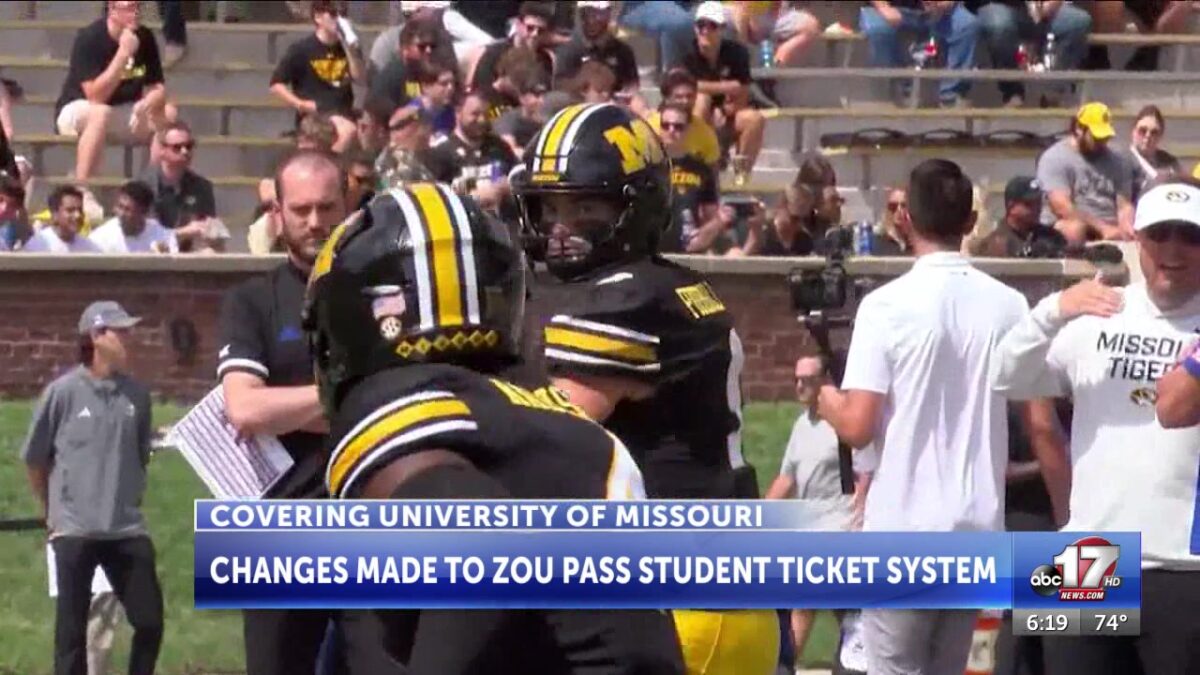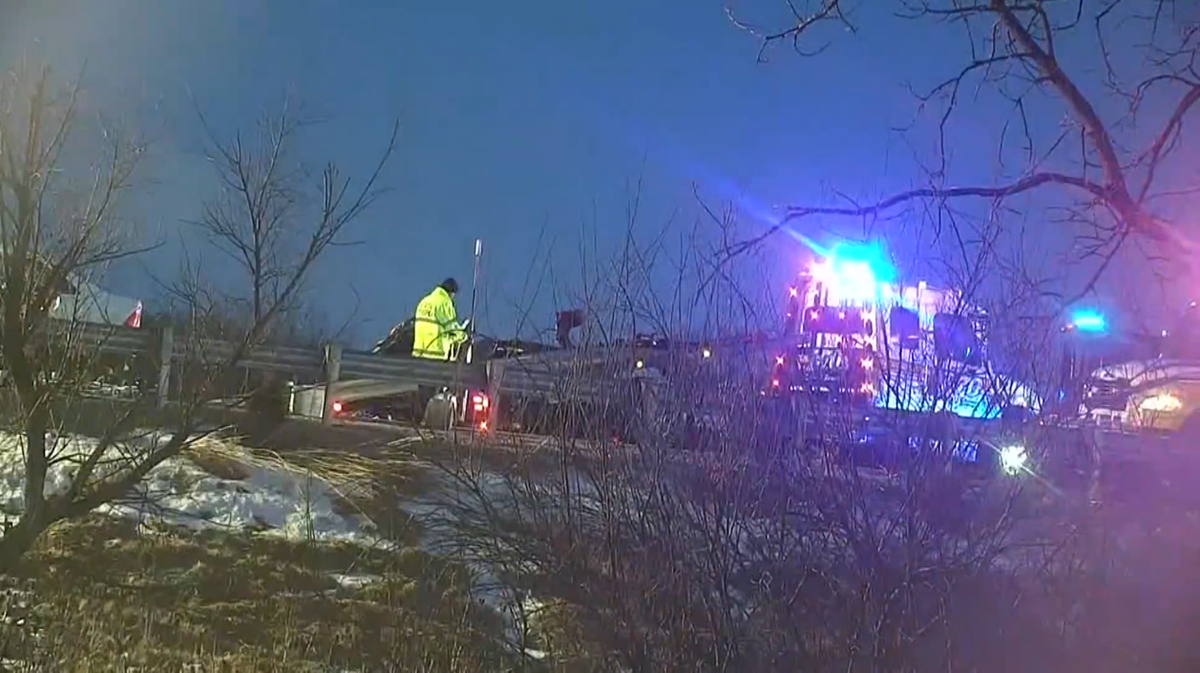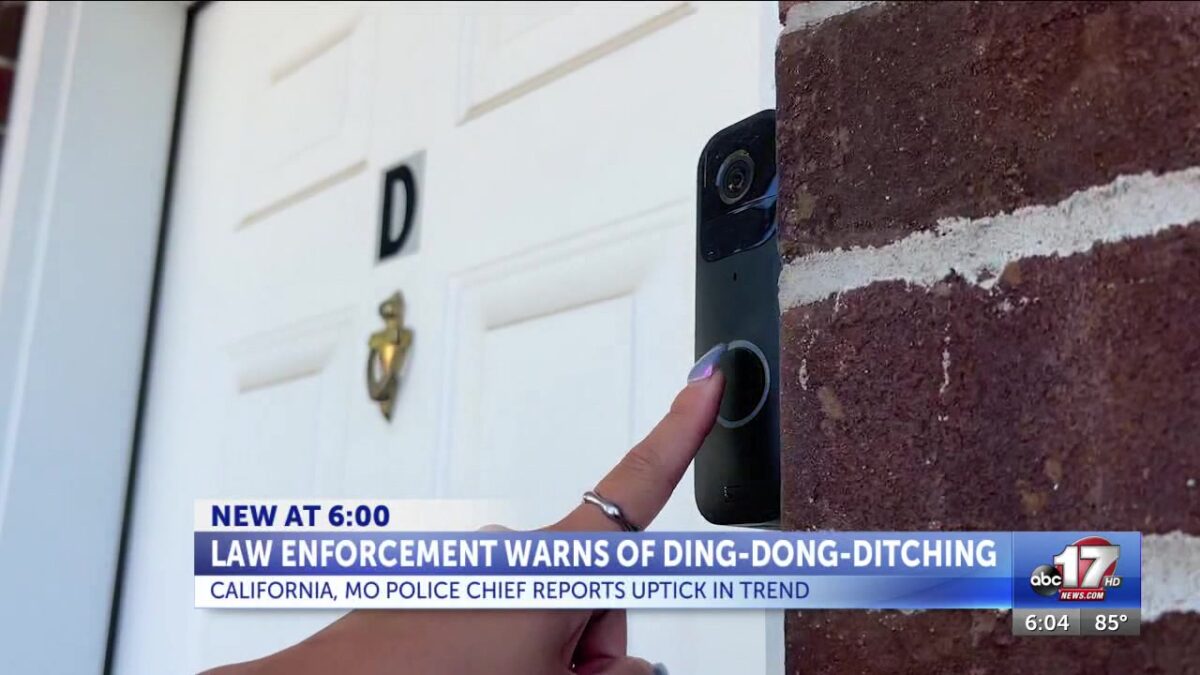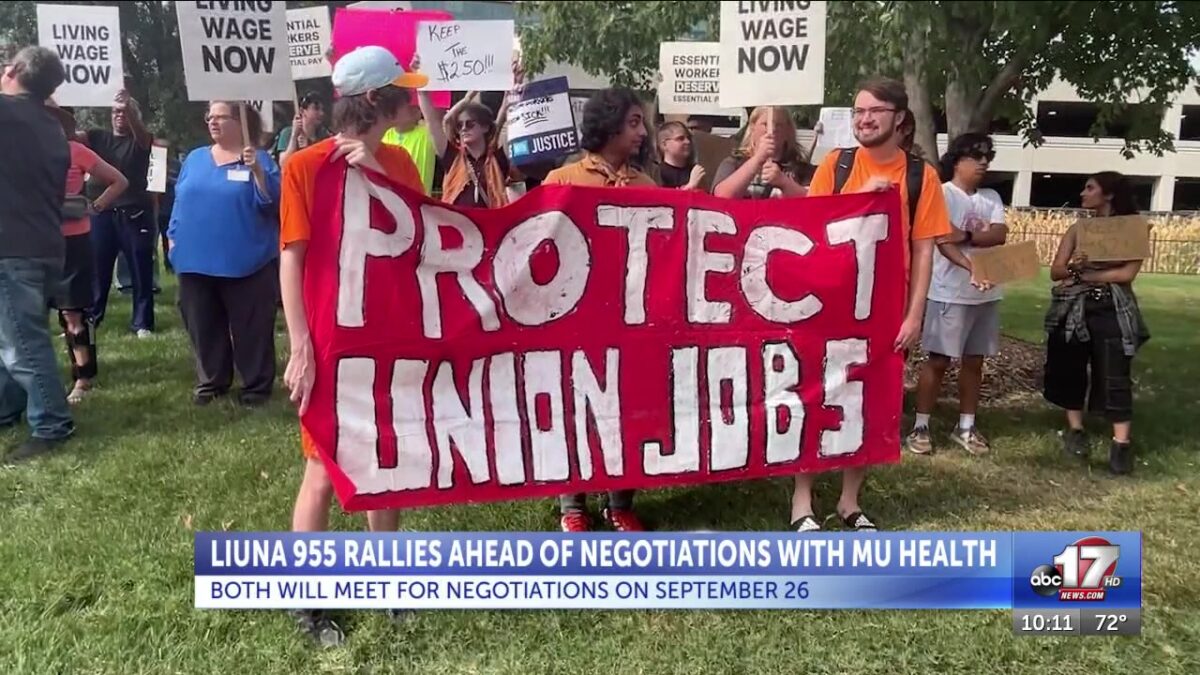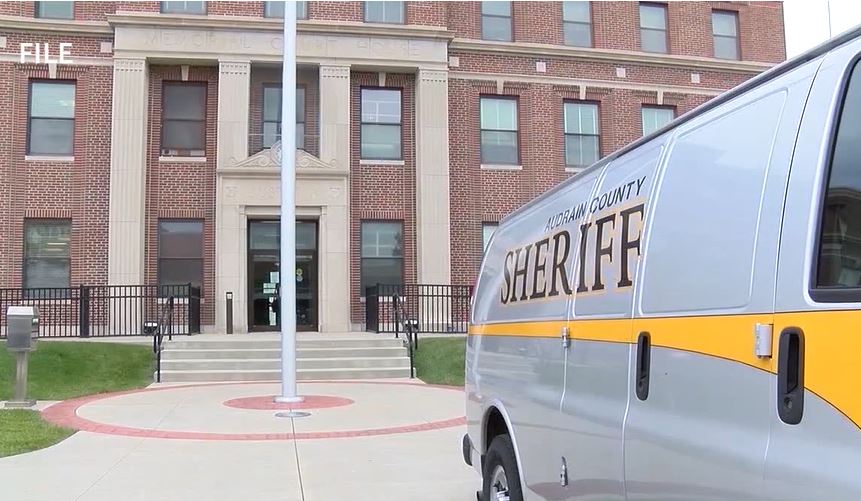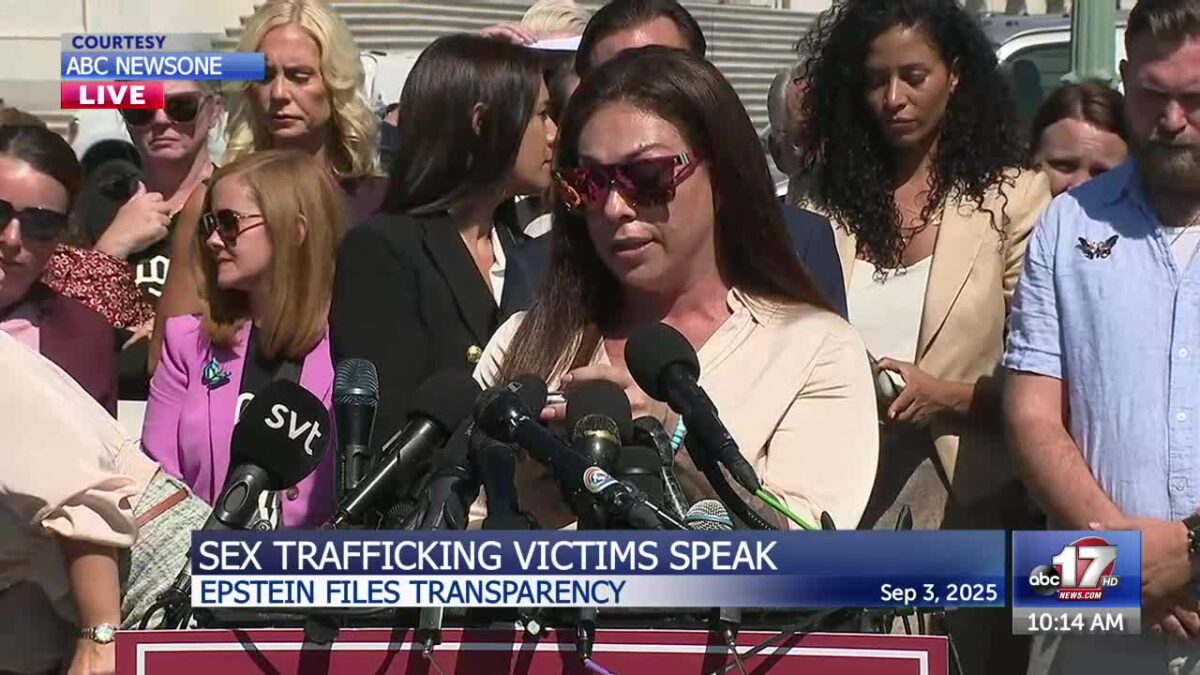Nia Hinson
COLUMBIA, Mo. (KMIZ)
Workers from the union chapter LiUNA 955 are demanding better pay from MU Health Care, ahead of wage negotiations planned for later this month.
About three dozen workers gathered outside of University Hospital on Wednesday afternoon, with the hopes of making MU Health Care hear their concerns. According to union representative Andrew Hutchinson, workers are asking for wage increases, claiming some workers’ pay doesn’t align with the increased cost of living.
“They’re asking for their critical staffing pay of $2.50 an hour to be put into their base wage and for an end to poverty wages so everyone at the hospital makes at least $19 an hour and then just across the board, wage increases,” Hutchinson said.
According to Hutchinson, MU Health Care created a $2.50 pay increase tied to critical staffing during the COVID-19 pandemic. Some of those people included people who clean the hospital, sterilize surgical equipment and take out the garbage.
Hutchinson said the issue for these workers is that the pay is not included in their base pay and therefore can be taken away.
“It’s something that every couple of months they get an email saying ‘as a reminder this expires on this day. It may or may not be renewed,” Hutchinson said. “That’s been going on for five years. What that means is if you’re an employee who makes $16 an hour and $2.50 an hour of that is subject to disappear at a moment’s notice, that’s scary.”
Daryl Wieberg was one of the protesters who attended Wednesday’s rally. He’s worked in the maintenance department at the hospital for more than a decade. He says he began working for the company due to its benefits.
However, Wieberg said the wages some workers are paid now make it hard to have anything to look forward to as an employee.
“We supposedly get number one workplace type scenario, but it’s not in the service department because the service departments are well underpaid to the outside,” Wieberg said. “It’d be hard to find a new job and start all over, but you know it’d be nice to have that extra money and looking at people leaving, starting at the bottom of their pay scale is more than what I can make here now, so it makes you really consider doing it.”
The union’s negotiating team will meet with MU Health Care administration on Sept. 26.
MU Health Care spokesman Eric Maze told ABC 17 News via email on Tuesday that wage discussions had not begun, and no proposals had been made. Maze said on Wednesday that MU Health has consistently paid 2-3% annual increases since 2021.
Maze said an annual increase is planned to be paid again in January.
“We regularly review employee compensation and have several tools to ensure that pay decisions are made based on relevant job characteristics, such as job type and specialty area, as well as the employees’ education, experience and performance,” Maze said. “A market compensation analysis is performed annually each August to identify areas that need additional investment and wage adjustments.”
According to Maze, critical staffing plans are still in use and are reviewed every 12 weeks.
Matthew Hocker has also worked for the hospital for more than a decade, working as a housekeeper. Hocker gave a speech at Wednesday’s rally, claiming parking rates have doubled over the years, which is something workers have also included in their list of grievances.
The irregular work hours for employees also don’t allow them to use the shuttle system the university offers, Hutchinson said.
Hocker also said workers’ sick time is being dictated, claiming they’re being told they have to go through certain channels in order to be able to use it. Hocker said he’s found it difficult to get out of bed some days due to his frustrations and said he feels as though many of their complaints have fallen on deaf ears.
“They’re just ignoring us. They’re basically just saying suck it up and deal with it,” Hocker said. “I think that every single employee, including from housekeeper to up, needs to have a decent wage…and they need to go back to sick time, put it all in one pot and let us decide how we use our time.”
Rep. Gregg Bush (D-Columbia) also showed support at the rally, saying he started working as a janitor years ago and understands many of the hardships workers are going through.
“The only way we get through it is by being together,” Bush said.
MU Health Care made $45 million in its fiscal year 2025, according to previous reporting. Experts expect to see higher profits in the next fiscal year after a financial catch-up period with Anthem. The insurer and MU Health spent months without an agreement, though they eventually reached a retroactive deal.
The union and the city of Columbia reached a deal on Tuesday, following months of negotiations.
Click here to follow the original article.
